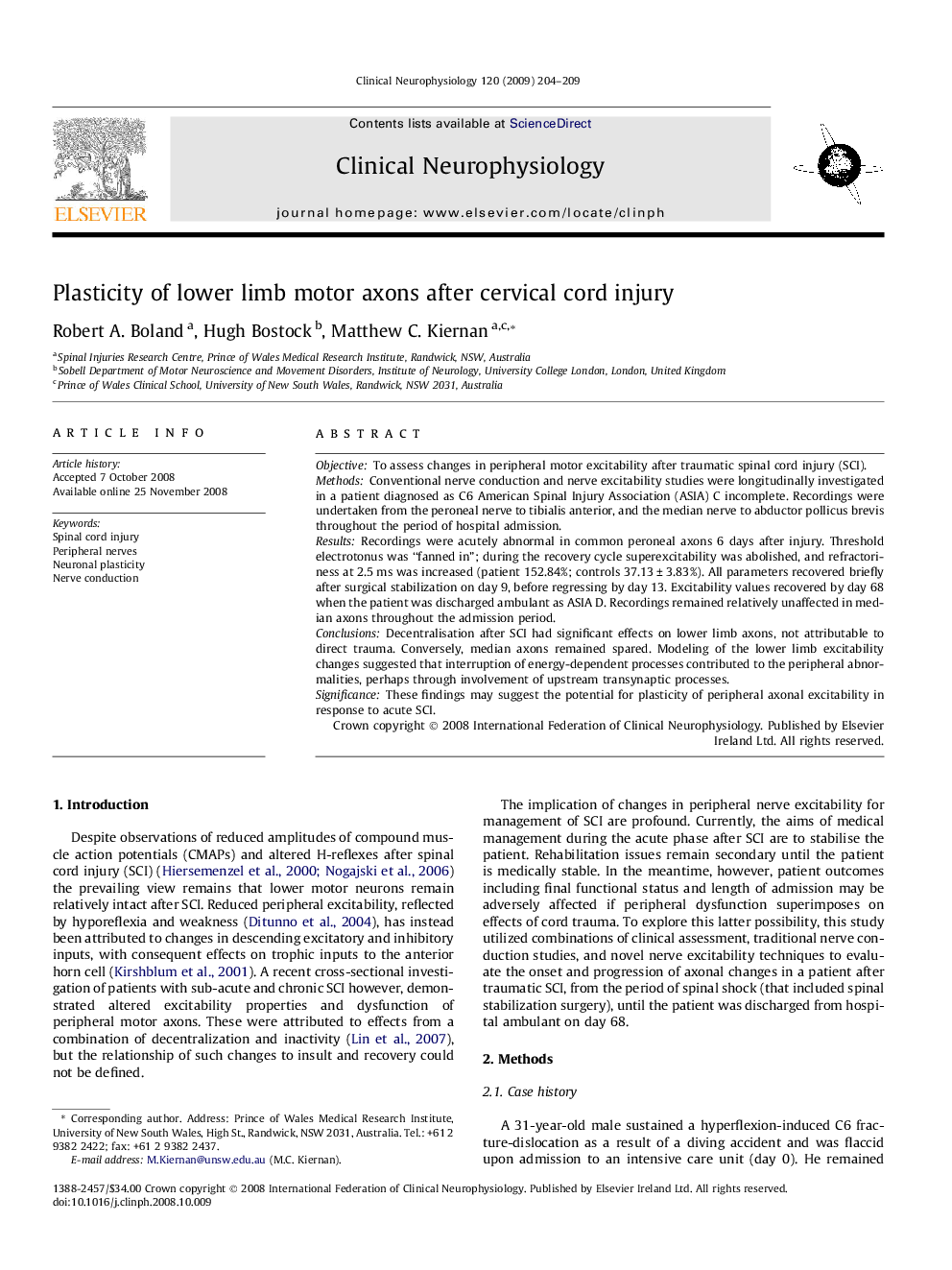| Article ID | Journal | Published Year | Pages | File Type |
|---|---|---|---|---|
| 3046716 | Clinical Neurophysiology | 2009 | 6 Pages |
ObjectiveTo assess changes in peripheral motor excitability after traumatic spinal cord injury (SCI).MethodsConventional nerve conduction and nerve excitability studies were longitudinally investigated in a patient diagnosed as C6 American Spinal Injury Association (ASIA) C incomplete. Recordings were undertaken from the peroneal nerve to tibialis anterior, and the median nerve to abductor pollicus brevis throughout the period of hospital admission.ResultsRecordings were acutely abnormal in common peroneal axons 6 days after injury. Threshold electrotonus was “fanned in”; during the recovery cycle superexcitability was abolished, and refractoriness at 2.5 ms was increased (patient 152.84%; controls 37.13 ± 3.83%). All parameters recovered briefly after surgical stabilization on day 9, before regressing by day 13. Excitability values recovered by day 68 when the patient was discharged ambulant as ASIA D. Recordings remained relatively unaffected in median axons throughout the admission period.ConclusionsDecentralisation after SCI had significant effects on lower limb axons, not attributable to direct trauma. Conversely, median axons remained spared. Modeling of the lower limb excitability changes suggested that interruption of energy-dependent processes contributed to the peripheral abnormalities, perhaps through involvement of upstream transynaptic processes.SignificanceThese findings may suggest the potential for plasticity of peripheral axonal excitability in response to acute SCI.
